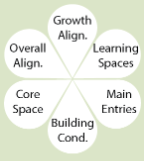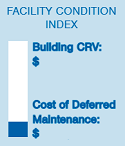-
Interactive Map of Facility Prioritization for Improvements
-
The interactive map below shows how each facility is considered to receive improvements based on the District’s criteria for prioritization (blue petals) and an impact score based on need (green circle). Projects are subsequently scheduled for improvements based on these metrics as well as other considerations (see here, page 2, a. - e.). Additional information on each criterion and how each is weighted is provided below the map.
The map’s interactive abilities include filtering based on “Type of School” (grade configuration) and geographic “Zone” (Attendance Area). The “School Comparison” feature provides a comparative overview of all schools which can be further refined by applying the school type and zone filters. Explanations for the map’s various features are provided below or by clicking the 🛈 symbol on the legend.
Related Information:
Five-Year Facilities Maintenance and Capital Implementation Plan
Interactive Map: Legend Key
-
Hammer: Indicates current construction projects.

Criteria Categories (see more details below the map): Each of the six criteria outlined below are listed by weight of importance; the higher the percentage, the more importance that criteria is given:
1) Growth and Alignment = 25%
2) Learning Space = 20%
3) Identifiable Main Entries = 18%
4) Building Condition = 17%
5) Core Space = 15%
6) Overall Alignment = 5%

-
Petals = Criteria for Prioritization: As shown below, each "petal" represents one of the six criteria for prioritization and represents a different weight of importance as indicated by a percentage, that taken together, totals 100%.

Criteria Score: The degree to which a building meets or exceeds each criteria is indicated by how much blue is filled out in the petal (as shown in the images above). The more each individual petal is filled with blue, the more that particular building feature meets or exceeds the standard. A building that has just been remodeled would have each petal filled with blue (little or no white showing).
-
Green Circle: Impact score based on need: Based on the petal/criteria category, green circles visually indicate the degree to which a facility has met or not met the District’s Facilities Standards. The larger the green circle, the more that facility has been determined as needing improvements based on its impact on the school community if improvements are made.

Facility Condition Index: Shows a comparison of the estimated cost to perform deferred maintenance on items rated as Critical, Poor or Fair against the current building replacement value (CRV). Note that the dollar amounts do not reflect the total cost required to perform the work; they do not include sitework, utilities, relocation/phasing, demolition, fees, permits, contingencies or inflation.

Criteria for Prioritization for Major Capital Improvement Projects
-
SPPS uses the criteria listed below to objectively identify and prioritize major capital-improvements to ensure projects are student centered, efficient and impactful. To generate each project’s impact score and initial priority ranking, each criteria has a different weight of importance (impact) as indicated by a percentage that, taken together, totals 100%.
Criteria for Prioritization - Overall Prioritization Score
A. Growth and Alignment - 25%: Alignment to projected programmatic and enrollment needs are addressed
- Building utilization: % at capacity
- Strategic plan alignment (SPPS Achieves)
- Enrollment trend line: 5-year average
- Inclusive restroom program model
B. Learning Spaces - 20%: Quality of instructional space that supports student learning
- All learning spaces
- Varied space
- Accessible restrooms
- General learning space
- Personalized learning space
- Interior rooms visible from common spaces
- Appropriately- Scaled spaces
- Daylighting and views
- PK, K and early childhood (birth to 3 years old) spaces
- Media Centers/Learning Commons
- Specialized Lab/Studio Space
- All spaces have accessible route
- Flexible/Adaptable space
- Furniture and finishes for learning
- Adult learning space
- Interdisciplinary learning space
- Accessible path signage
- Experiential interiors
- Outdoor learning space
C. Identifiable Main Entries - 18%: Safe and respectful main building entries that welcome students and community into our buildings
- Office located at main entry
- Welcoming main office
- Entries observable by staff
- Power assisted door entry
D. Building Condition - 17%: Condition of building systems, as determined by the Facility Condition Assessment, support healthy student and staff environments.
E. Core Space - 15%: The quantity and quality of core functional spaces such as gyms and cafeterias support student learning and wellness.
- Gym, cafeteria, auditorium - sized for student population
- Three lunches
- Assembly space
- Flexible dining space
- Kitchen and serving areas
- Health service space
- Shared space
- Space for activities
- Student gathering space
- Student storage, lockers
F. Overall Alignment - 5%: Considerations to the overall improvement to the building and site should align with functional and programmatic needs as determined by the Facility Condition Assessment and the Facility Master Plan process.
- Administrative/Adult spaces
- Separate bus, pedestrian and auto traffic
- Safe and accessible site
- Restrooms - family/assist
- Service/Trash/Dumpster
- Safe and accessible outdoor play
- Traffic signage
- Staff resource space
- Room Signs
- Delivery
- Lighting all sides
- Maintenance equipment enclosure, with combustible where needed
- Climate control for equipment room
- Secure and separate room for technology equipment
- Interior display (for student or community art, projects, events)
- Internal wayfinding
Note: A seventh criteria, “Permanent Construction,” is part of the official District list of criteria for prioritization as approved by the Board of Education in 2015, but has been eliminated from the list above as SPPS has satisfied this criteria district wide, as it has successfully phased out the use of portable classrooms.




